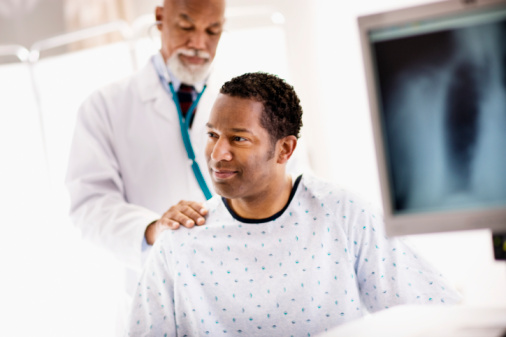
The “big data” revolution is well under way in healthcare and medical research, and its promise seems limitless. The hope is that by analyzing tens of thousands of electronic medical records, investigators can uncover new risk factors, novel preventive measures and treatments that are the most effective for a range of diseases and conditions.
But are we harnessing this enormous power to ask the right questions? What are the concerns of patients, what will benefit them most and how can we make sure the results of our research reflect the diversity of the American population?
Reaching Patients Where They Access Care
According to a 2001 study, each month, of every 1,000 Americans, 800 will experience medical symptoms. Of these, 327 will consider seeking medical care and 217 will actually visit a doctor’s office. And of those seeking medical attention, 113 will visit a primary care physician, 21 will visit a hospital outpatient clinic, 13 will go to the emergency room, 8 will be hospitalized—and fewer than 1 will be hospitalized in an academic medical center.
Paradoxically, the vast majority of medical research is conducted in the tiny area at the bottom right corner of the figure: academic medical settings.
The Agency for Healthcare Research and Quality (AHRQ) sought to address this disparity by supporting the formation of practice-based research networks (PBRNs) to bring together primary care physician practices to participate in research. The New York City Research and Improvement Networking Group (NYC RING), a PBRN sponsored by Albert Einstein College of Medicine’s department of family and social medicine, was founded in 2003. NYC RING’s mission is to focus on the urban underserved by bringing together doctors practicing in our neighborhood—the Bronx—to include them, their institutions and their patients in research.
Shifting the Priorities of Research
PBRNs were designed to provide support to clinicians practicing in a variety of models—private practices, health centers, managed-care group practices—to share their observations, develop research programs and investigate questions important to them and their patients. For example, while a researcher may prefer biological measurements to quantify success or failure, patients often identify quality-of-life improvements as their main goal. These networks give patients and patient advocates a strong voice in driving research that matters to them.
Currently NYC RING is engaged in a multisite diabetes clinical trial to compare the long-term benefits, quality of life and risks of four widely used diabetes drugs in combination with metformin, the most common first-line medication for treating type 2 diabetes.
Simultaneously, there has been a profound shift in the goals of research itself. The research environment has moved from focusing exclusively on new discoveries to realizing the importance of translating discoveries into treatments. Known as “comparative effectiveness research,” it studies how well therapies work in the real world, with all its complications and imperfections.
N2—A Network of Networks
The medical landscape has changed substantially over the past decade. Fewer physicians are in private practice, more are salaried employees and more are using electronic medical records. These changes have allowed researchers more easily to pull together and tap into larger data sets, which ideally produce more reliable results.
PBRNs have had to evolve as well. Many PBRNs have been informally collaborating for years, pursuing research opportunities that reflected their shared interests and capabilities. But these associations have now been formalized with the establishment of AHRQ’s “network of networks” —known as N2 PBRN—which provides resources and infrastructure to help investigators formally pursue community-based research on a larger scale.
Einstein’s NYC RING is a founding member of the new N2 PBRN, which includes nine established PBRNs dedicated to providing comprehensive and accessible community-oriented primary and preventive health services for underserved—primarily urban—populations.
The Fruits of Collaboration
As a result of this cooperative approach, medical research is far more inclusive than it was before—and more rigorous. Using a larger and more diverse group of study participants ensures that research results are relevant to more people in the United States and around the world.
But perhaps most significant are the insights we gain into the real-world workings of approved drugs, devices, preventions and treatments. If most people access healthcare through their primary physicians’ offices, then it’s in everyone’s interest to see how patients respond to the care they receive there. This provides us with a window into what healthcare is really like for most Americans, so we can make it better.


Comments on this entry are closed.